Kunzite Quality Factors
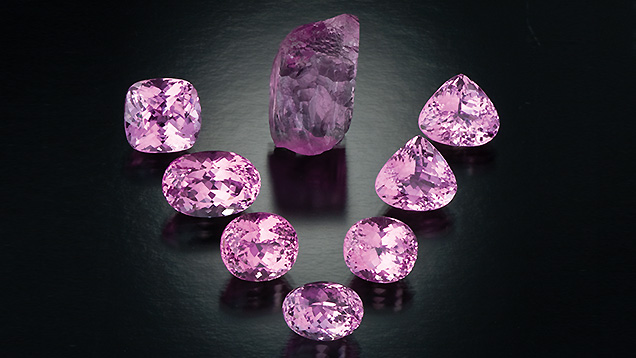
Color
Kunzite is the pink-to-violet variety of the mineral spodumene, and gets its color from manganese. It’s most often found in shades of pale pink, but more vivid colors are possible and it can achieve rare hues of vivid violet to purple.
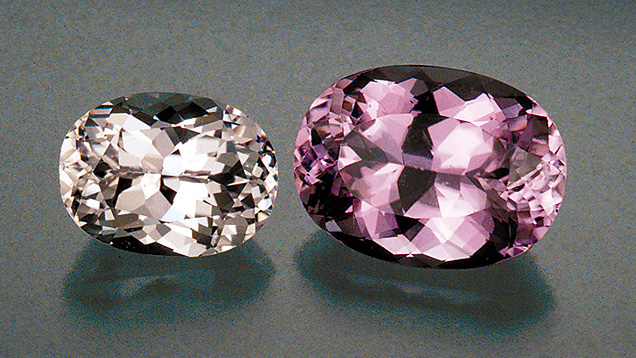
The color of kunzite can range from very pale to medium shades of pink and violet. In rare cases, kunzite is found in more intense hues. - Robert Weldon, courtesy Pala International
Kunzite’s color can be enhanced by irradiation followed by heating. Whether natural or enhanced, the color can fade when exposed to heat and intense light. It’s a good idea to store kunzite jewelry in a closed jewelry box or case when it’s not being worn.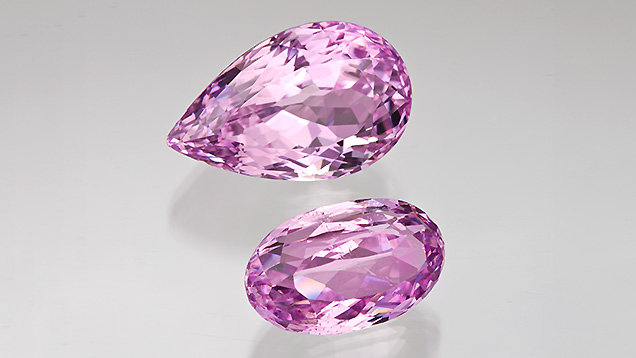
These kunzites show the gem’s lovely shades of pink. - Robert Weldon
Kunzite is pleochroic, which means it can display different colors in different crystal directions. Kunzite displays its best, most intense color down the length of its crystals.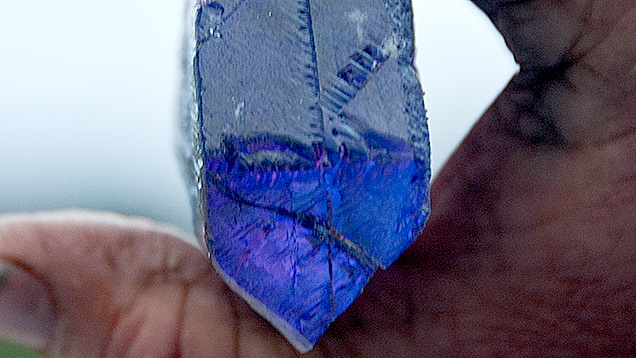
Kunzite’s color is most concentrated down the length of its crystal. This crystal from the Oceanview mine in Pala, California, displays a vivid purple. - Brendan Laurs
ClarityKunzite crystals often have relatively few inclusions, so “clean” finished gems in jewelry are common.
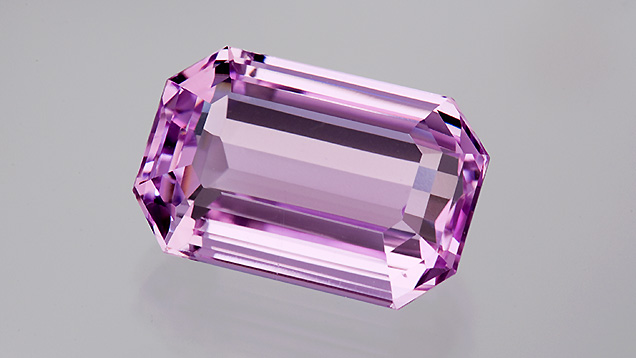
This kunzite’s cut shows off its inclusion-free nature. - Robert Weldon
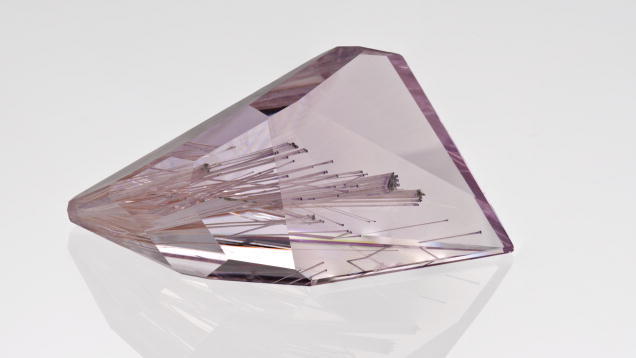
The cutter of this kunzite made creative use of the needle-like inclusions by making them into a design element. - Orasa Weldon
CutKunzite can present problems for cutters. It has two directions of cleavage, which means that the gem can split cleanly along those directions. As a result, kunzite has been known to simply fall apart from the pressure applied during faceting. In addition, kunzite’s color is usually concentrated down its length, or C-axis. Cutters must factor these properties into their plans when fashioning gems.
Kunzite appears in a wide variety of shapes and cutting styles. Because many crystals are relatively inclusion-free, step-cut stones are fairly common.
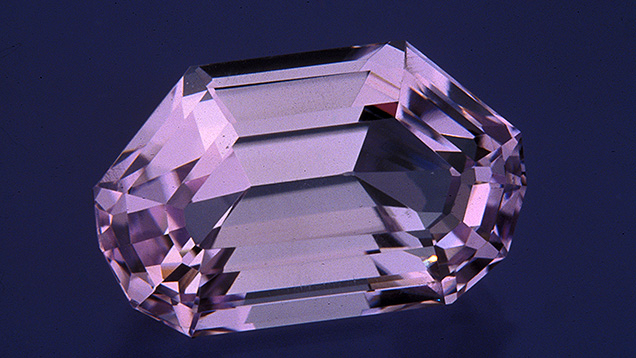
This kunzite is a modified step cut. - Maha Tannous, courtesy Roland Reed
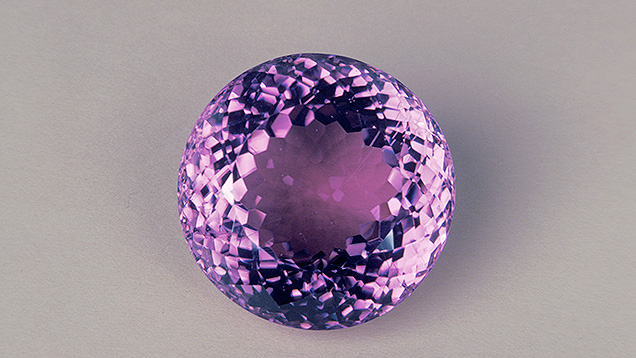
This round kunzite displays a lovely, lively brilliant cut.
Skilled cutters have fashioned kunzite into every imaginable shape and style. Some have even carved the gem. Also, many kunzites are cut deep to maximize the color.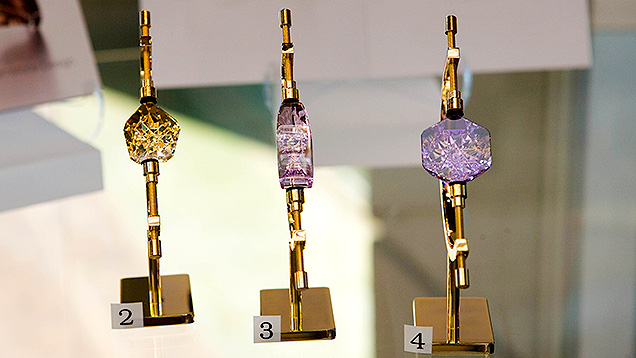
These gems were carved by Dalan Hargrave. The gem in the center is a kunzite. The others are varieties of quartz: #2 is a citrine and #4 is an ametrine. - Eric Welch, courtesy Dalan Hargrave
Carat WeightKunzite is often found in large sizes. The Smithsonian Institution houses a faceted 880-carat heart-shaped example.
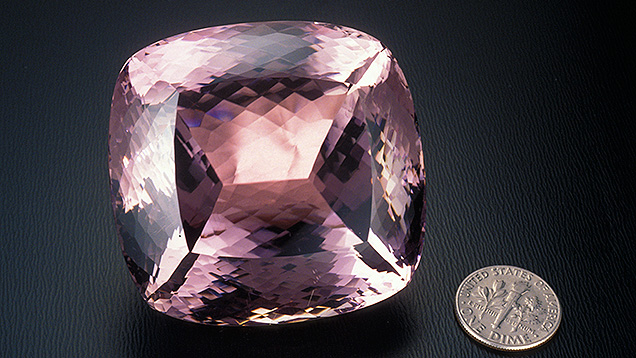
This kunzite from Minas Gerais, Brazil, weighs 648.10 carats. It’s shown next to a dime to demonstrate scale. - Robert Weldon, courtesy M. Meienhalder



